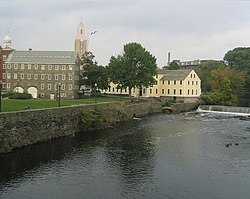
Lowell is a city in Massachusetts, in the United States. Alongside Cambridge, It is one of two traditional seats of Middlesex County. With an estimated population of 115,554 in 2020, it was the fifth most populous city in Massachusetts as of the last census, and the third most populous in the Boston metropolitan statistical area. The city also is part of a smaller Massachusetts statistical area, called Greater Lowell, and of New England's Merrimack Valley region.
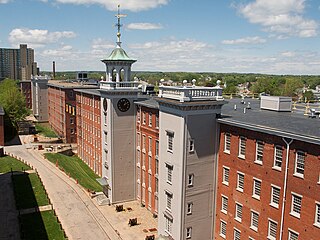
Lowell National Historical Park is a National Historical Park of the United States located in Lowell, Massachusetts. Established in 1978 a few years after Lowell Heritage State Park, it is operated by the National Park Service and comprises a group of different sites in and around the city of Lowell related to the era of textile manufacturing in the city during the Industrial Revolution. In 2019, the park was included as Massachusetts' representative in the America the Beautiful Quarters series.

Francis Cabot Lowell was an American businessman for whom the city of Lowell, Massachusetts, is named. He was instrumental in bringing the Industrial Revolution to the United States.

Samuel Slater was an early English-American industrialist known as the "Father of the American Industrial Revolution", a phrase coined by Andrew Jackson, and the "Father of the American Factory System". In the United Kingdom, he was called "Slater the Traitor" and "Sam the Slate" because he brought British textile technology to the United States, modifying it for American use. He stole the textile factory machinery designs as an apprentice to a pioneer in the British industry before migrating to the U.S. at the age of 21.
A mill town, also known as factory town or mill village, is typically a settlement that developed around one or more mills or factories, usually cotton mills or factories producing textiles.
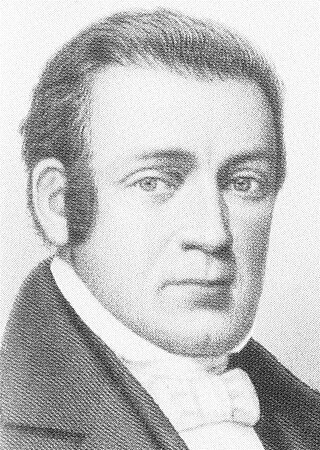
Paul Moody was a U.S. textile machinery inventor born in Byfield, Massachusetts. He is often credited with developing and perfecting the first power loom in America, which launched the first successful integrated cotton mill at Waltham, Massachusetts, in 1814, under the leadership of Francis Cabot Lowell and his associates.
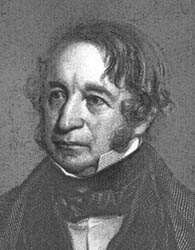
The Boston Associates were a loosely linked group of investors in 19th-century New England. They included Nathan Appleton, Patrick Tracy Jackson, Abbott Lawrence, and Amos Lawrence. Often related directly or through marriage, they were based in Boston, Massachusetts. The term "Boston Associates" was coined by historian Vera Shlakmen in 1935.

Completed in 1796, the Pawtucket Canal was originally built as a transportation canal to circumvent the Pawtucket Falls of the Merrimack River in East Chelmsford, Massachusetts. In the early 1820s it became a major component of the Lowell power canal system. with the founding of the textile industry at what became Lowell.

The Lowell Offering was a monthly periodical collected contributed works of poetry and fiction by the female textile workers of the Lowell, Massachusetts textile mills of the early American industrial revolution. It began in 1840 and lasted until 1845.

The Boston Manufacturing Company was a business that operated one of the first factories in America. It was organized in 1813 by Francis Cabot Lowell, a wealthy Boston merchant, in partnership with a group of investors later known as The Boston Associates, for the manufacture of cotton textiles. It built the first integrated spinning and weaving factory in the world at Waltham, Massachusetts, using water power. They used plans for a power loom that he smuggled out of England as well as trade secrets from the earlier horse-powered Beverly Cotton Manufactory, of Beverly, Massachusetts, of 1788. This was the largest factory in the U.S., with a workforce of about 300. It was a very efficient, highly profitable mill that, with the aid of the Tariff of 1816, competed effectively with British textiles at a time when many smaller operations were being forced out of business. While the Rhode Island System that followed was famously employed by Samuel Slater, the Boston Associates improved upon it with the "Waltham System". The idea was successfully copied at Lowell, Massachusetts, and elsewhere in New England. Many rural towns now had their own textile mills.
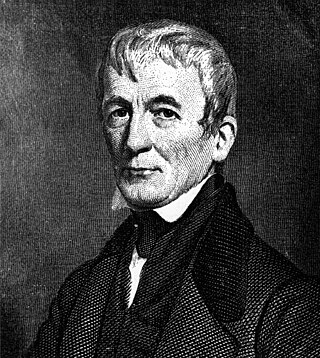
Patrick Tracy Jackson was an American manufacturer, one of the founders of the Boston Manufacturing Company of Waltham, Massachusetts, and later a founder of the Merrimack Manufacturing Company, whose developments formed the nucleus of Lowell, Massachusetts.

The Amoskeag Manufacturing Company was a textile manufacturer which founded Manchester, New Hampshire, United States. From modest beginnings it grew throughout the 19th century into the largest cotton textile plant in the world. At its peak, Amoskeag had 17,000 employees and around 30 buildings.

The Lowell mill girls were young female workers who came to work in textile mills in Lowell, Massachusetts during the Industrial Revolution in the United States. The workers initially recruited by the corporations were daughters of New England farmers, typically between the ages of 14 and 35. By 1840, at the height of the Textile Revolution, the Lowell textile mills had recruited over 8,000 workers, with women making up nearly three-quarters of the mill workforce.
The history of Lowell, Massachusetts, is closely tied to its location along the Pawtucket Falls of the Merrimack River, from being an important fishing ground for the Pennacook tribe to providing water power for the factories that formed the basis of the city's economy for a century. The city of Lowell was started in the 1820s as a money-making venture and social project referred to as "The Lowell Experiment", and quickly became the United States' largest textile center. However, within approximately a century, the decline and collapse of that industry in New England placed the city into a deep recession. Lowell's "rebirth", partially tied to Lowell National Historical Park, has made it a model for other former industrial towns, although the city continues to struggle with deindustrialization and suburbanization.

Kirk Boott was an American industrialist who was instrumental in the early history of Lowell, Massachusetts.

The Lowell mills were 19th-century textile mills that operated in the city of Lowell, Massachusetts, which was named after Francis Cabot Lowell; he introduced a new manufacturing system called the "Lowell system", also known as the "Waltham-Lowell system".
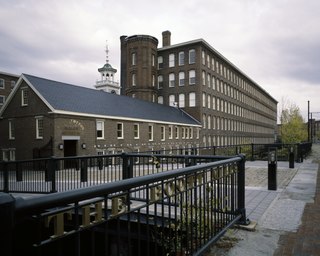
The Boott Mills in Lowell, Massachusetts were a part of an extensive group of cotton mills, built in 1835 alongside a power canal system in this important cotton town. It's incorporators were Abbott Lawrence, Nathan Appleton, and John Amory Lowell, and is named after Kirk Boott, the first Agent of the Proprietors of Locks & Canals in Lowell. Today, the Boott Mills complex is the most complete remainder of antebellum textile mills built in Lowell. The original Mill No. 6 is managed by the National Park Service unit Lowell National Historical Park and houses the Boott Cotton Mills Museum and the Tsongas Industrial History Center for K-12 educational programs.
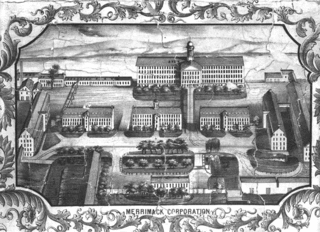
The Merrimack Manufacturing Company was the first of the major textile manufacturing concerns to open in Lowell, Massachusetts, beginning operations in 1823.

The Merrimack Valley is a bi-state region along the Merrimack River in the U.S. states of New Hampshire and Massachusetts. The Merrimack is one of the larger waterways in New England and has helped to define the livelihood and culture of those living along it for millennia.

The Saco-Lowell Shops was once one of the largest textile machine manufacturers in the United States. It was formed in 1912 with a merger between the Lowell Machine Shop with the Saco-Pettee Machine Company. At its peak in the 1920s, the company had manufacturing facilities in Lowell and Newton, Massachusetts, and Biddeford, Maine. The company maintained their executive office at 77 Franklin Street in Boston, and also had a southern office in Charlotte, North Carolina.

